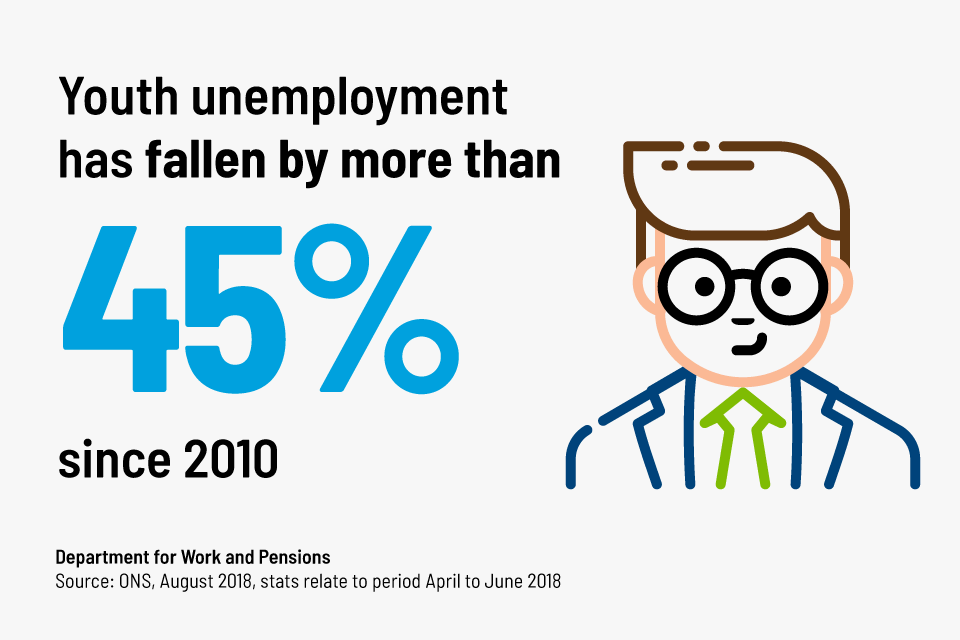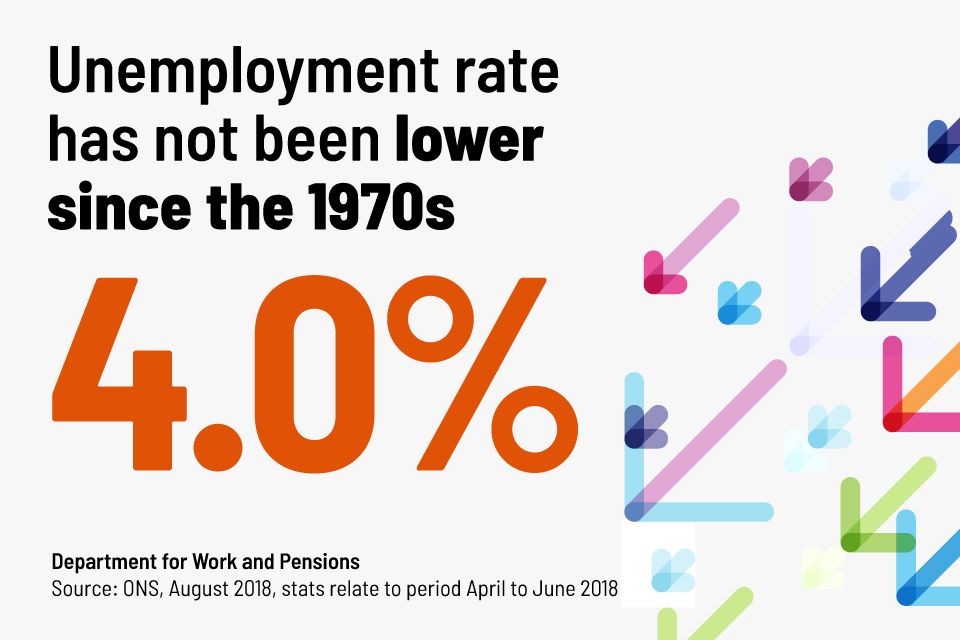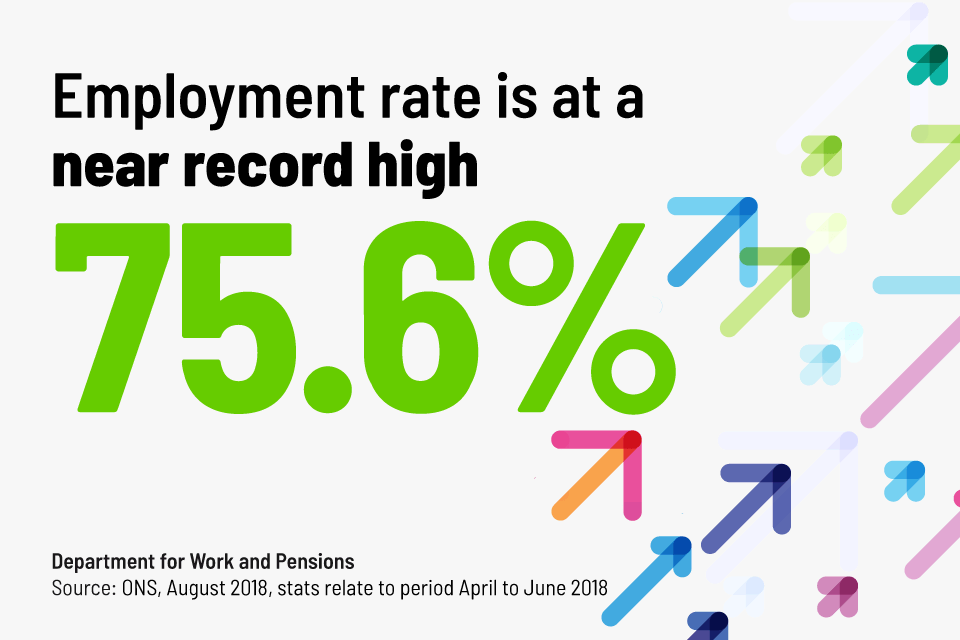Unemployment rate falls to 4%, with record low youth unemployment

The unemployment rate has fallen further this month, to 4%, with a higher proportion of black and minority ethnic (BME) people in work than ever before.
As young people in England and Wales await their A-level results on Thursday 16 August, the proportion of young people who are unemployed and not in full-time education is at a record low of 4.7%.
Meanwhile, there are also a record number of older people in work – over 10.2 million.
Secretary of State for Work and Pensions Esther McVey said:
With the unemployment rate falling further to just 4%, and youth unemployment down over 45% since 2010, school leavers this week can look forward to a growing jobs market, improving the prospects for their future careers.
In fact, the UK’s vibrant jobs market is benefiting people across the board. Record rates of ethnic minority people in work also show that more families across our society are benefiting from the security of a job, with wages also on the increase.
We have some of the most creative, innovative and hard-working young people in the world and this summer I’ve been urging them to take on a summer job, gaining ‘soft skills’ – or as I call them, essential skills – for their future careers.

Minister of State for Employment Alok Sharma said:
With the unemployment rate at a 43-year low, it is also very good that we are seeing wages continuing to outpace inflation for the fifth month in a row.
We’ve backed businesses to create jobs and reformed welfare to make work pay, and thanks to the government’s policies and employers’ confidence in the British economy we have seen over 3.3 million more people employed in our country since 2010. Over 75% of these people are employed in permanent jobs and full-time jobs and over 70% in higher-level occupations which pay higher wages.

Today’s figures also show:
- older workers also continue to find work as the number of workers aged 50 and over is at a record high of 10.21 million
- the BME employment rate is at a record high of 65.5%, an increase of 1% on the year
- since 2010 the majority of employment growth has been in both full-time and permanent roles
- there was also a large fall in zero-hour contracts in April to June 2018, making up only 2.4% of people in employment – a fall of 104,000 on the year
The government has reformed welfare to make work pay, backed businesses to take more people on, and built a stronger, fairer economy.












Responses